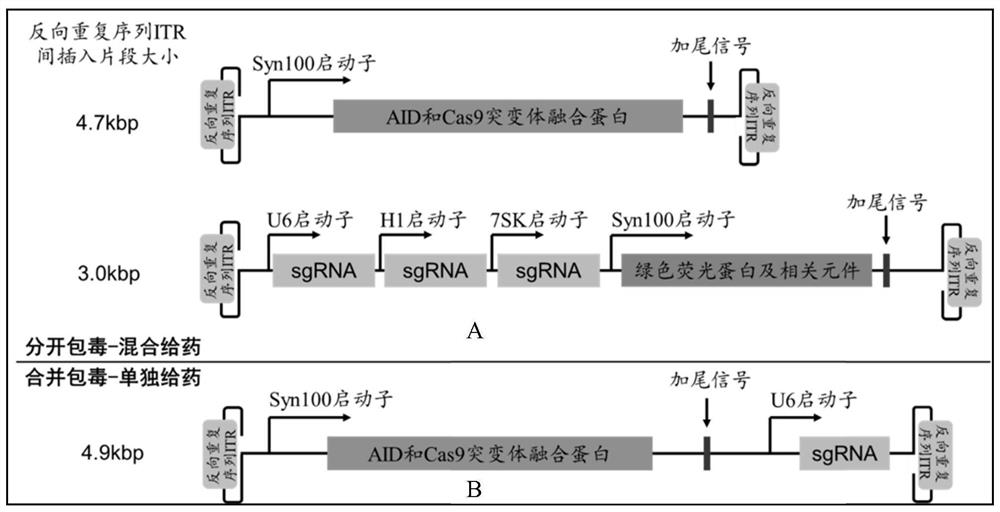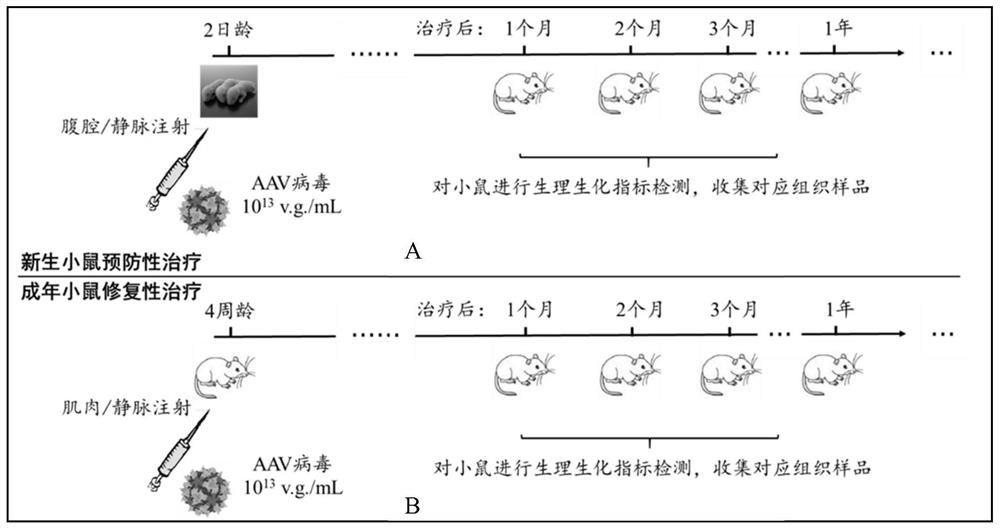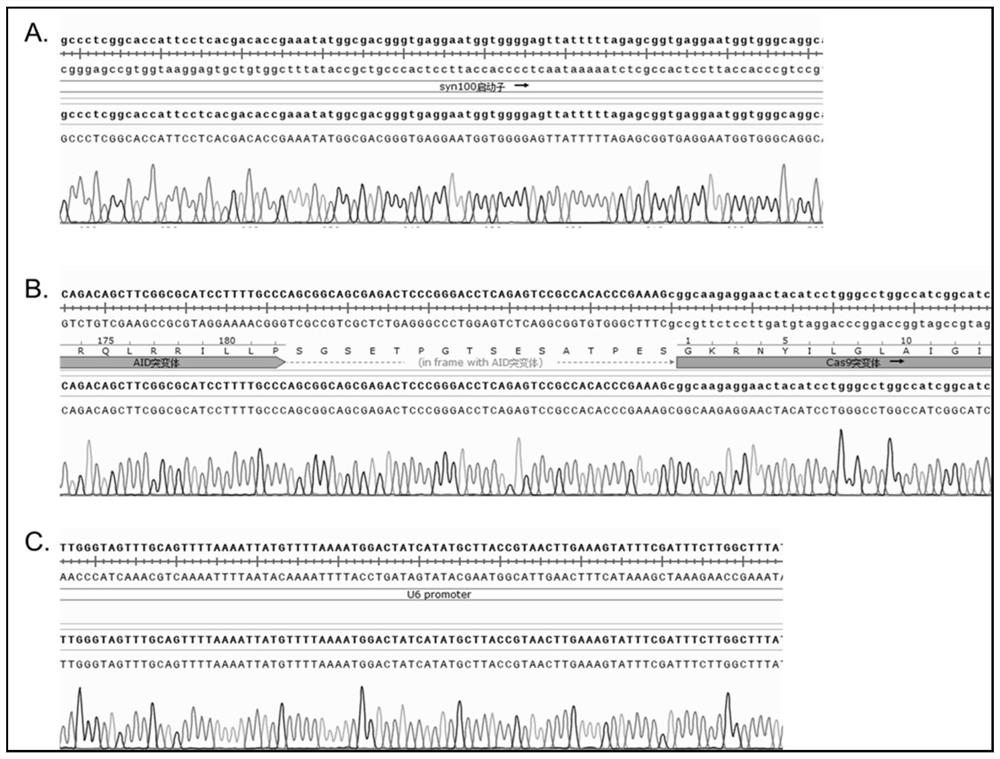Exon splicing enhancers, sgRNAs, gene editing tools and applications associated with Duchenne muscular dystrophy
A Duchenne muscular nutrition, gene editing technology, applied in genetic engineering, DNA/RNA fragments, applications, etc., can solve rare problems
- Summary
- Abstract
- Description
- Claims
- Application Information
AI Technical Summary
Problems solved by technology
Method used
Image
Examples
Embodiment 1
[0045] Example 1 AAV virus carrying gene editing tools
[0046] Gene editing tools designed according to the present invention such as figure 1 As shown, taking AID as an example, we cloned the corresponding sequence into the AAV plasmid, including the following steps:
[0047] First, the pAAV2 backbone vector (purchased from addgene, but not limited to) was double-digested based on the restriction sites of XhoI and NotI. At the same time, the amino acid sequences of the AID and Cas9 fusion proteins in the gene editing tool were designed, and the amino acid sequences and nucleic acid sequences are shown in SEQ ID NO.1 and SEQ ID NO.2, respectively. After codon optimization, the double-stranded DNA fragment was directly synthesized, and the elements such as Syn100 promoter and tailing signal were connected to the AAV backbone vector to obtain the AAV vector plasmid expressing the AID-Cas9 mutant fusion protein, the sequence of which was SEQ ID NO.3 shown. In addition, using ...
Embodiment 2
[0049] Example 2 In vivo treatment of DMD model mice with AAV carrying gene editing tools
[0050] In this example, a novel DMD mouse disease model Dmd-E4 with abnormal cardiac function was selected, which can be purchased from Jiangsu Jicui Yaokang Biotechnology Co., Ltd., but is not limited thereto. Dmd-E4 showed cardiac hypertrophy, fibrosis and other phenotypes in the heart at 6-8 weeks, and showed severe degeneration of cardiac function at about 8 months. This process closely mimics the cardiac pathology of DMD patients. In response to this model, we used cytosine deaminase and Cas9 to design gene editing tools to target the exons carrying pathogenic mutations, induce mutations near their 5' splice sites, and make them skip reads. On the basis of not affecting the open reading frame of the protein, the expression of Dystrophin protein can be retained to the maximum extent and its biological function can be restored.
[0051] Specifically, the method of Example 1 was use...
Embodiment 3
[0065] Example 3 Gene editing of the DMD model of human induced pluripotent stem cell iPSC successfully restored the expression of Dystrophin protein
[0066] At the same time, the present invention has successfully implemented the gene editing therapy of human cells. First, we constructed induced pluripotent stem cells (iPSCs) from normal human peripheral blood mononuclear cells, and then used the CRISPR-cas9 method to specifically delete the exon 50 of the Dystrophin-encoding gene DMD, Exon50, so that the dystrophin protein encoding The sequence produced a frameshift mutation, thereby constructing a mutation type that mimics a DMD patient, making it a good DMD disease model cell. For this cell, we designed the sequences of AID and Cas9 fusion proteins and corresponding sgRNAs to target a series of elements potentially regulating exon splicing in Exon51 of exon 51 of the DMD gene. sgRNA is sgRNA-12 shown in SEQ ID No. 19 and sgRNA-13 shown in SEQ ID No. 20, sgRNA-12 mainly t...
PUM
 Login to View More
Login to View More Abstract
Description
Claims
Application Information
 Login to View More
Login to View More - R&D
- Intellectual Property
- Life Sciences
- Materials
- Tech Scout
- Unparalleled Data Quality
- Higher Quality Content
- 60% Fewer Hallucinations
Browse by: Latest US Patents, China's latest patents, Technical Efficacy Thesaurus, Application Domain, Technology Topic, Popular Technical Reports.
© 2025 PatSnap. All rights reserved.Legal|Privacy policy|Modern Slavery Act Transparency Statement|Sitemap|About US| Contact US: help@patsnap.com



